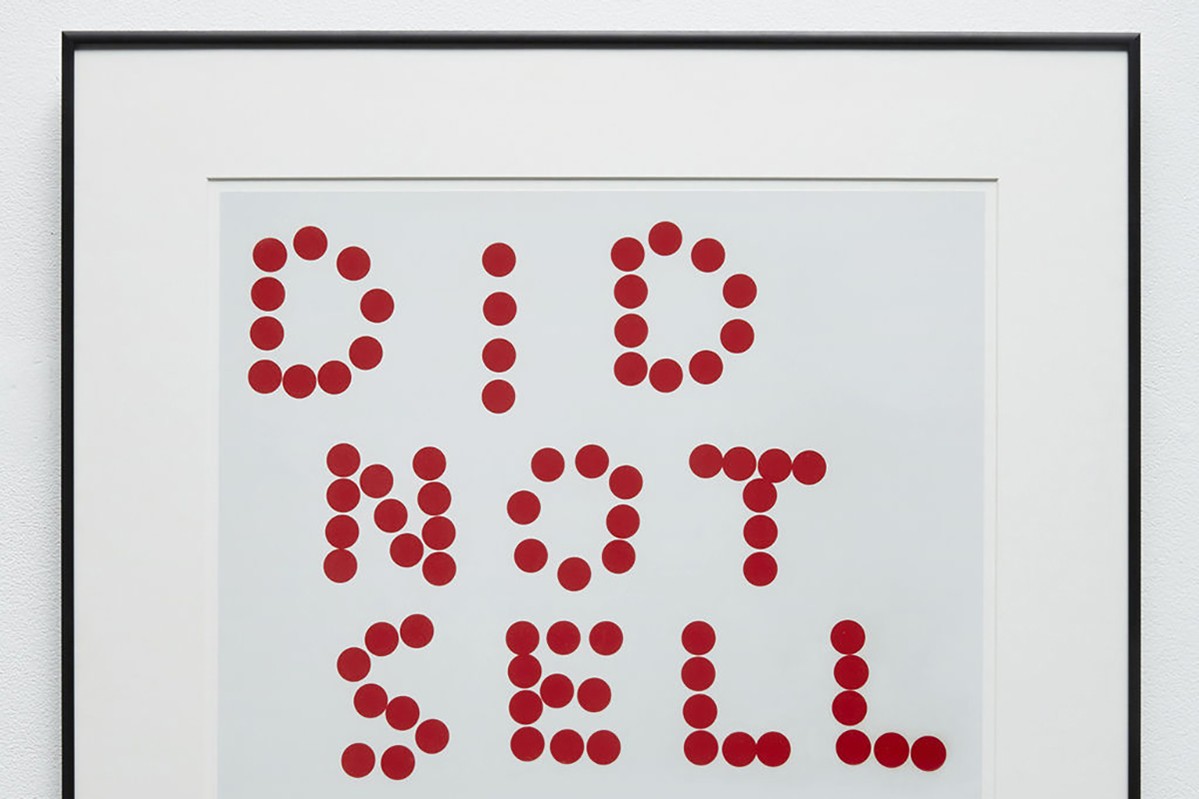In a limited space filled with numerous works, we find a specific element present in several galleries: the red dot. The circular sticker can be the quickest way to know if a work is obtainable. The need to ask if a work is available immediately recedes at its presence: no, it is no longer for sale.
The use of red dots in galleries to indicate the availability of work can be traced as far back as the '70s. It was so widely used back then but if you look around today, it's hardly ever used anymore. While a lot of galleries still use it, compared to the majority who have decided to stop its usage, it gets scanter by time. The disappearance of these dots can be pointed at the way the art market has moved from then to where it is now.

The art market continuously thrive and with this, the way galleries sell art has also differed over the years. Fairs spring up left and right and we find more and more lower-priced works that reach new collectors. This indicates the growing market of art. Prints have also been making waves in the industry thus, the surge of such works in fairs. The lack of these red dots does have benefits as its absence forms a bridge between collectors and gallerists. The chances of being approached about the availability of artwork are higher when red or green dots (indicating works 'on hold') are not present. This applies to the higher end of the market, forcing each collector to inquire and learn more about the artist and similar works from what they're interested in. Gallerists have admitted in the past that this is a way in which they engage a collector into taking a peek at backroom pieces that may be more impressive than those displayed on the gallery walls.
“The lack of these red dots does have benefits as its absence forms a bridge between collectors and gallerists.”
But red dots are not simply an indication of availability; it can also be linked with trend and demand. At art fairs, there can be a lot of red dots still being used by a lot of galleries. Aside from the fact that it saves time from collectors to ask (with the busy environment of such events), it is also an indication of an artist that sells well and is in demand. The red dots serve as a signal to trigger a sense of urgency for a collector to covet one remaining piece from an artist that has sold most of his work within the fair period or finally acquire a piece of a certain style that's long been brimming with red dots all over it. It is a simple message of "pick me" without having to rub it in the faces of collectors that this should be the next artwork hanging on their gallery walls.
Yet the demand and the turbulent nature of today's art market may also be the reason for its disappearance. A lot of collectors have been very discerning with the art they covet thus changing the way tides crash and grow in the industry. Prices of art pieces have hit the roof and ultimately surpassed expectations and most collectors have decided not to be impulsive with the works they buy. Not to mention, most collectors also don't want their purchases to be made public by having prices displayed under each work or red dots indicating its status.
The use of red dots is as subjective as creating art itself. Depending on the way you want your market to move, the red dot is indicative of where you stand: transparency or vulgarity. A lot of collectors and genuine buyers are attracted to art whether or not a red dot is present under a certain artist or style; these are the people who continue to alleviate the tension between the two contrasting beliefs.

